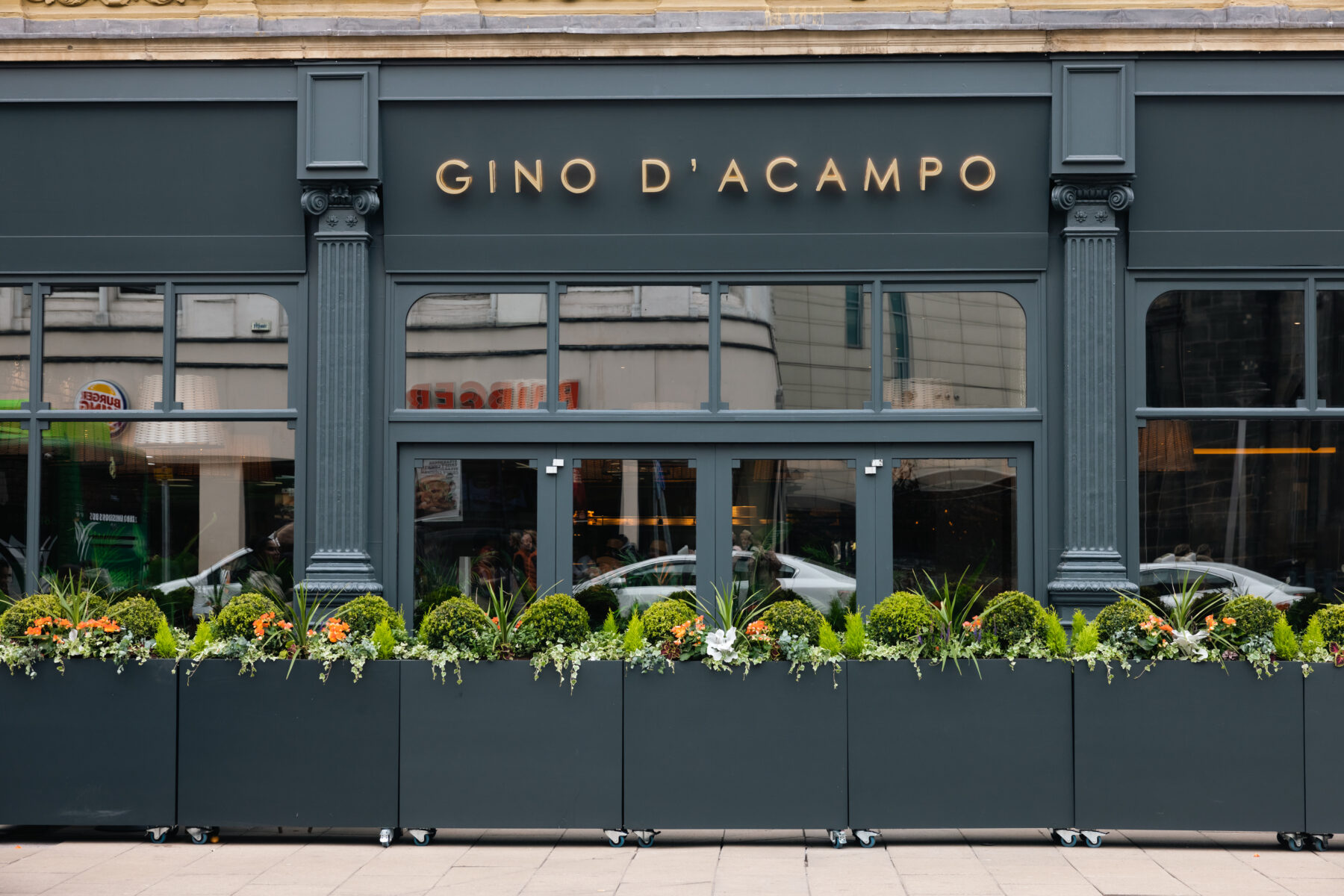
Article
Leeds – A city centre recalibrating and growing
Andrew Cooper, LeedsBID
Leeds is preparing to host UKREiiF, the UK’s Real Estate Investment & Infrastructure Forum, and welcome 6,000 delegates into the city later this month.
Located in Leeds for the second year, with its return already confirmed for 2024, UKREiiF has become the industry’s must-attend event, highlighting investment and development opportunities, whilst helping forge new relationships to drive economic growth through development and regeneration.
As the city counts down to the event, LeedsBID’s Chief Executive Andrew Cooper looks at how Leeds is rising to the challenge of the changing high street and recalibrating its city centre, fast-tracking redevelopment to future-proof the city.
What changes can we expect from the high street?
High Streets have seen many changes over the years with well established brands disappearing and new ones making an entry. Some high streets in the UK still have a BHS shaped hole and for others you can still make out where Woolworths used to be. The continued narrative by some that “our high streets are dying” could become a self-fulfilling prophecy for them, while for other towns and cities, particularly ones with Business Improvement Districts (like Leeds), they have grasped the challenge of change and recalibrated their city centres. BIDs are defined by their middle initial ‘Improvement’ and as not for profit organisations, they are well placed to bring businesses and organisations together for collective good. Their only agenda is the improvement of the place in which they serve. Leeds is seeing the benefit of this collective approach. A cleaner city, more public artworks and animation, additional free events in the city centre to drive footfall in, new festivals and the enhancement of existing ones, pop-up parks and green initiatives to save costs for all businesses.
It is only through a combined belief of positive collaboration and the removal of political barriers, that can lead to a successful transformation of our high streets going forward.
Filling the voids:
In recent months, we have seen a lot of movement in Leeds. H Samuel has done an excellent fit out to a void unit which has been covered in vinyl for over three years. The new shop has bought an injection of life and quality to the street. Its former premises are already being developed and there is a positive domino effect all the way along Briggate.
In Leeds we are witnessing major change. Planners, investors, business sectors and the local authority can take credit for not waiting for the tumble weed, but acting fast, expediating plans to change buildings and fast track redevelopment to future proof the city.
One expert who had been looking at the changes in business properties for over 20 years stated to me that we are at “the peak of the down point in this cycle in terms of buildings being refurbished and properties being removed from the rating list.” In Leeds, units which have been vacant for over three years are now being redeveloped, creating a knock-on effect to investment opportunity and high street change. Shopping centres, that have lost some major brands post pandemic, are re-evaluating their offer and keeping it fresh. Two of our two biggest high street challenges – Debenhams and House of Fraser – now have the scaffolding up, with the aim to change and transform within 15 months. This is quite incredible.
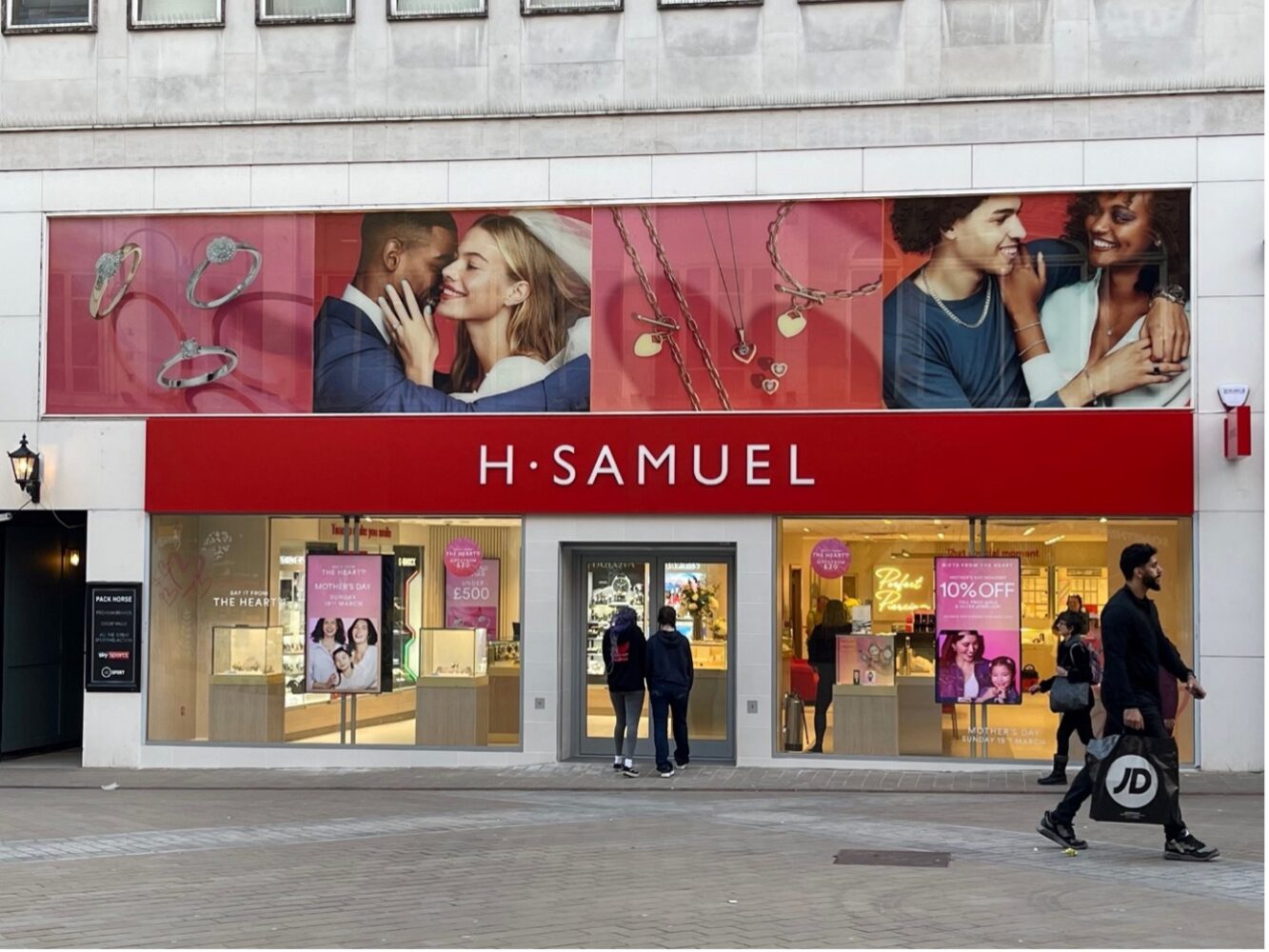 The new H Samuel now fully opened on Briggate in the former Zara Home store which was vacant for over 3 years.
The new H Samuel now fully opened on Briggate in the former Zara Home store which was vacant for over 3 years.
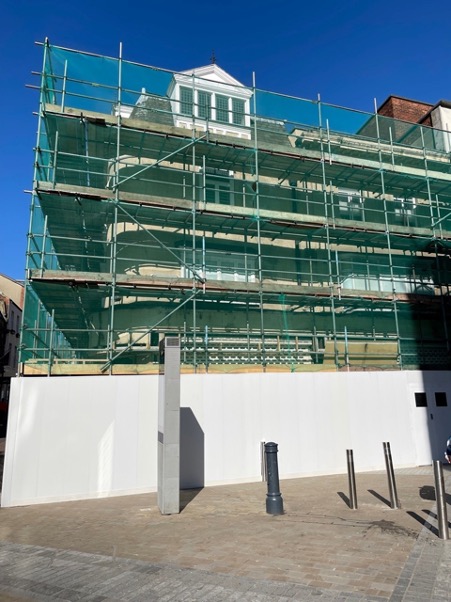 The former H Samuel building already under redevelopment April 2023
The former H Samuel building already under redevelopment April 2023
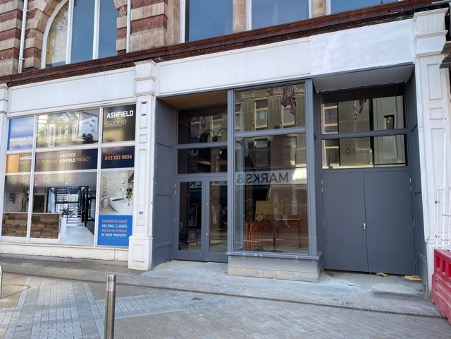 Empty units being fitted out for an expansion of Footlocker, on Briggate. 2023
Empty units being fitted out for an expansion of Footlocker, on Briggate. 2023
Clearly, not all voids have been filled, but the activity in the first quarter of the year is visible. Encouraging signs for the future include Mille’s Cookies on the Headrow filling a void left by Fatsos, while the new Leeds Mathematics School development on the Headrow and The Trinity University fit out in Trevelyan Square show it’s not just in retail which is a key component within LS1. New openings of excellent, modern and well-thought-out office developments in Wellington Place are also testimony to the positive and optimistic future for Leeds in the expanding professional sector.
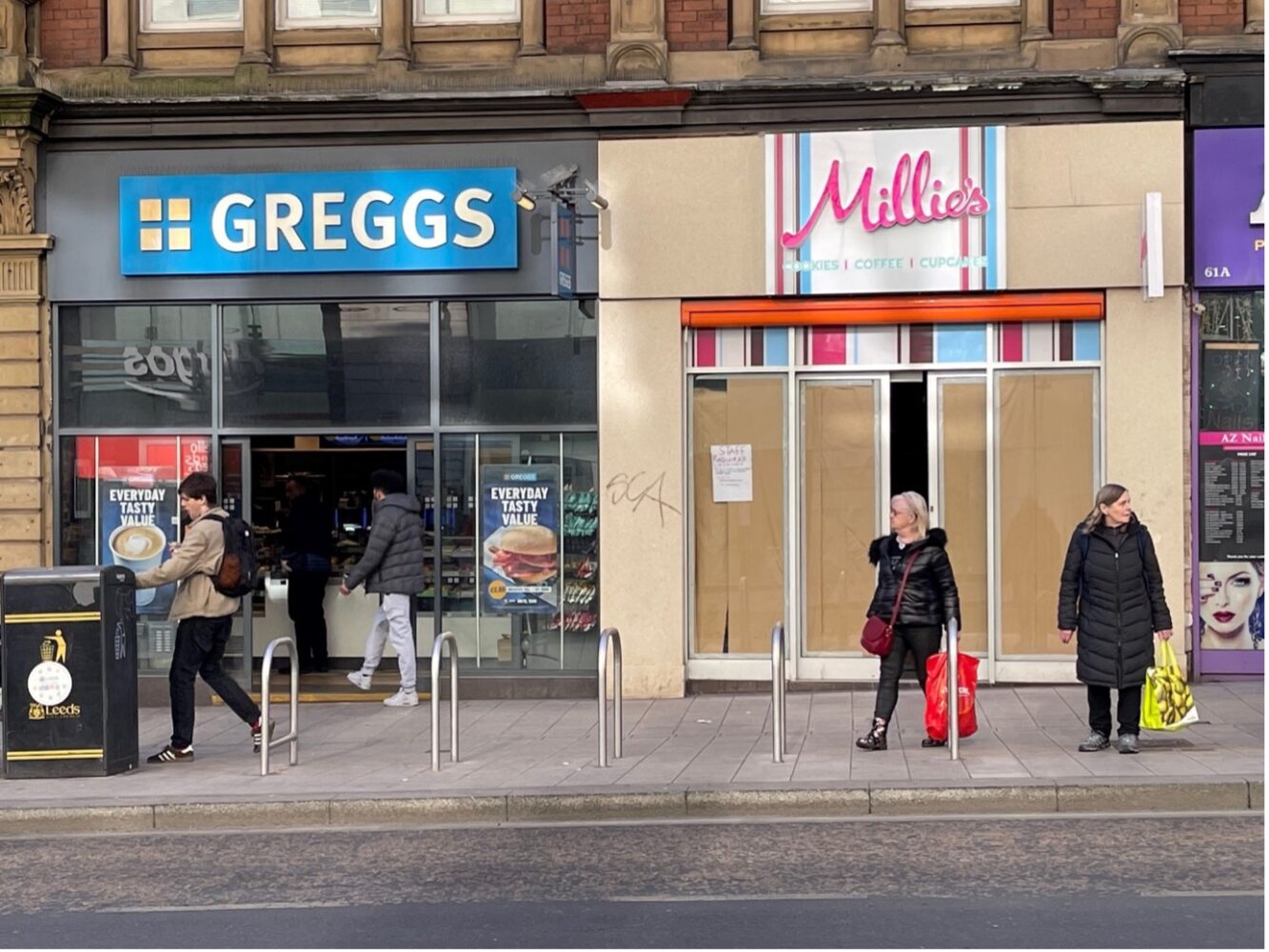 Smaller units which have been vacant for some time following the WFH fallout of the pandemic are now being filled. Here on the Headrow in Leeds, Millie’s Cookies fills the unit previously occupied by Fatsos.
Smaller units which have been vacant for some time following the WFH fallout of the pandemic are now being filled. Here on the Headrow in Leeds, Millie’s Cookies fills the unit previously occupied by Fatsos.
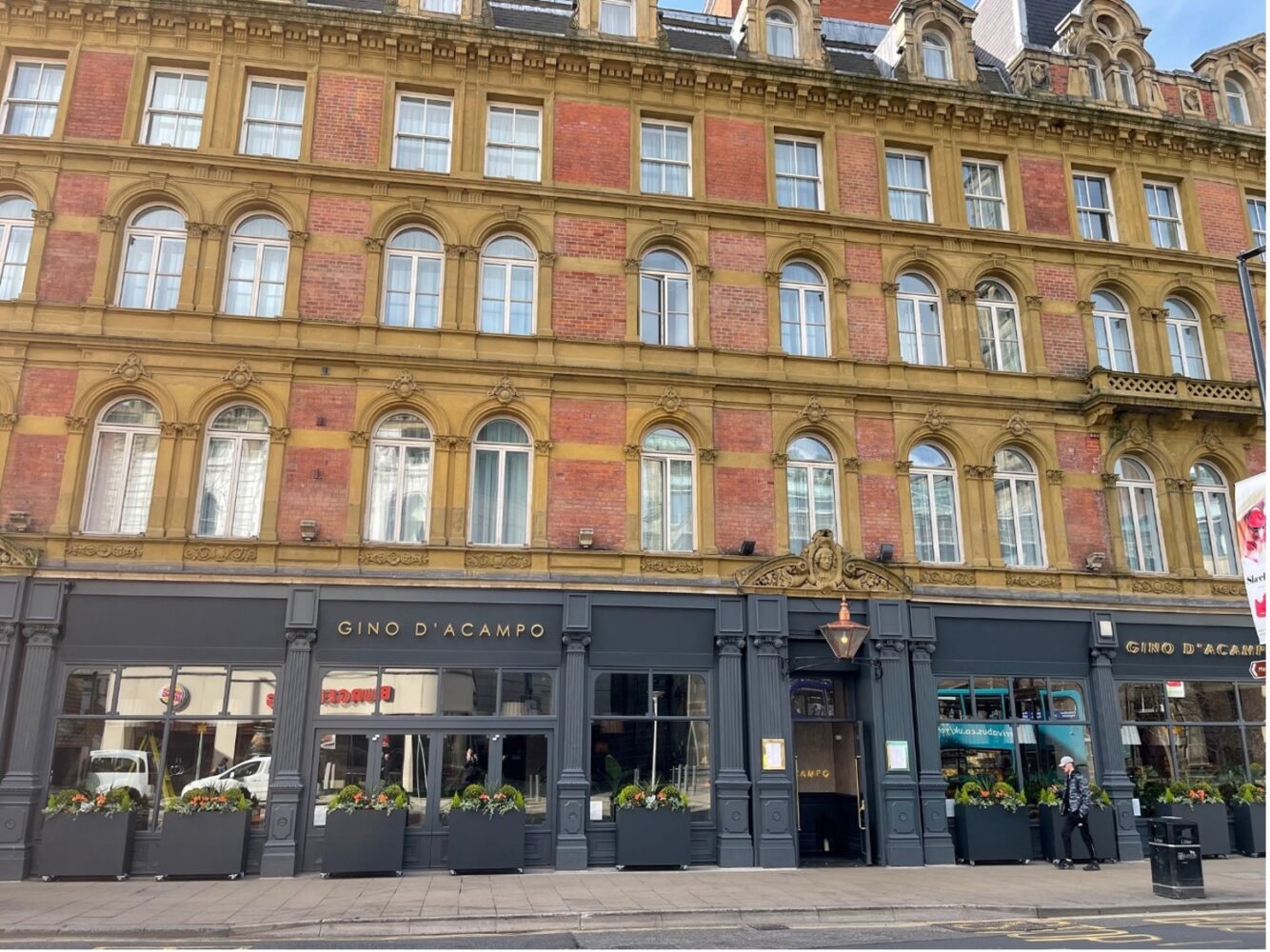 Gino D’Acampo – excellent redevelopment on Boar Lane
Gino D’Acampo – excellent redevelopment on Boar Lane
 The Leeds Mathematical School opening in September 2023.
The Leeds Mathematical School opening in September 2023.
Most humans are inquisitive and want to know what is going on. On the continent it is part of their planning requirements to display more formally what the development is, who will be occupying the space/building and when it will be complete. This would be a good example for the UK to follow in managing expectations and mitigating against short term inconvenience.
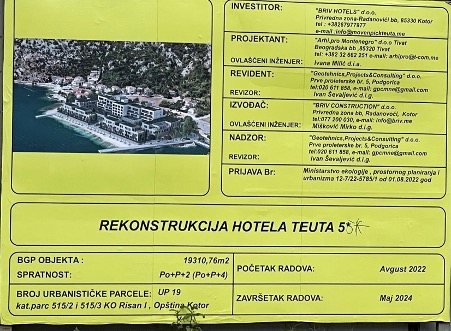 Construction signage on the continent. In this example, a new 5 Star Hotel ‘Teuta’ off the Adriatic Bay in Montenegro to be complete in May 2024. An image is included which helps the passer-by to visualise what is to come and when it will happen.
Construction signage on the continent. In this example, a new 5 Star Hotel ‘Teuta’ off the Adriatic Bay in Montenegro to be complete in May 2024. An image is included which helps the passer-by to visualise what is to come and when it will happen.
Proactive shopping centres
Leeds is fortunate to have eight shopping centres including Kirkgate Market, Leeds Corn Exchange and numerous arcades and side streets. Rumours of a signing for the old Top Shop store in Trinity are rife, with an expectation of a new opening pending.
Clarks former shoe shop is currently being fitted out by Ernest Jones and King Edward Street has seen several new brands moving in over recent months, including Size and Cut & Craft. Proactive transformation by property agents and shopping centre managers is definitely reaping the rewards. Careful consideration of the mix of businesses and ensuring this is well understood by the consumer will have a long-term impact on the city. No one wants the roundabout of openings and closures in a short space of time that some areas of the city have been plagued with. Sustaining businesses is key. LeedsBID provides all businesses with the opportunity to reduce its costs of waste disposal through a partnership with Forge Waste & Recycling and our Street Rangers Team is on hand daily to clean all entrances and pathways, ensuring the experience of coming to Leeds is maintained to the highest level.
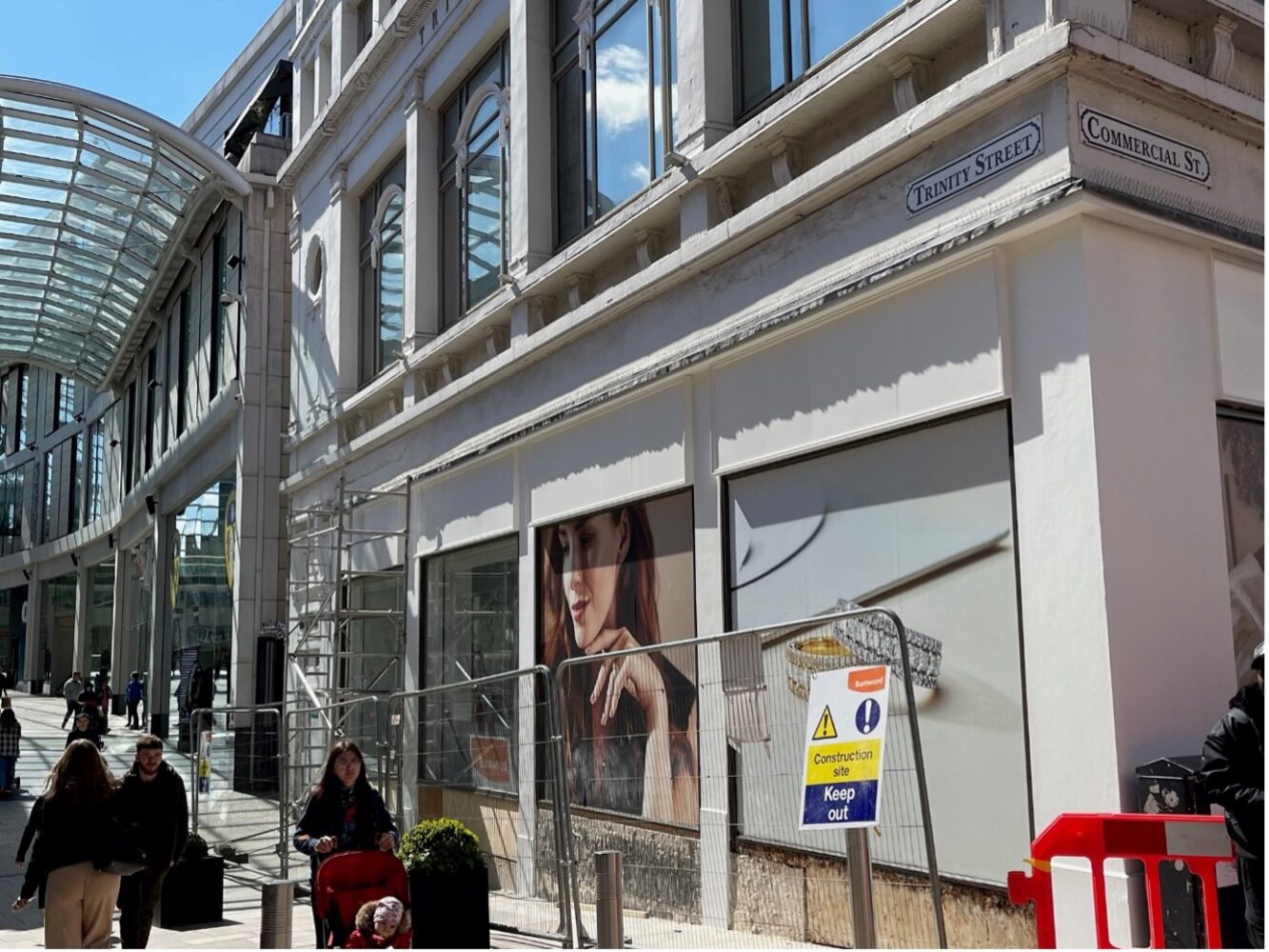 Ernest Jones fitting out on the corner Trinity Street and Commercial Street. April 2023.
Ernest Jones fitting out on the corner Trinity Street and Commercial Street. April 2023.
Transformation and the long term
The two major gaps on the High Street are already being redeveloped. The House of Fraser grey building, not as sympathetic to its environs compared to other buildings on Briggate in my opinion, is now being demolished and transformed into accommodation. To be a 24-hour city, people need the opportunity to live in the city centre. Having a growing vibrant community of residents of all demographics sustains the long-term future of city centres.
Debenhams closed in 2021 and in April 2023 the development hoardings have been constructed for the forthcoming Flannels store. This is excellent news. Both these projects are proactive and developers and planners have enabled these transformations to take place quickly. Sure, we will all have to look at the hoardings for a while and deal with the inconvenience of construction, but the long-term gains are a transformed high street with a new mix and offering, having a city centre where people can work, live and play.
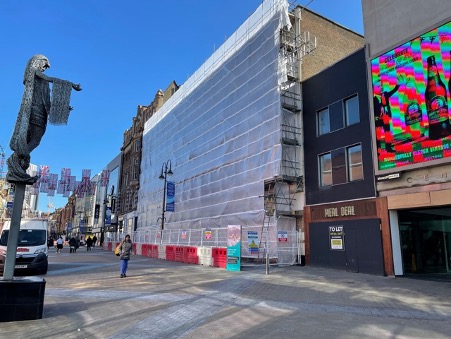 Former House of Fraser on Briggate. Not hanging about but cracking on.
Former House of Fraser on Briggate. Not hanging about but cracking on.
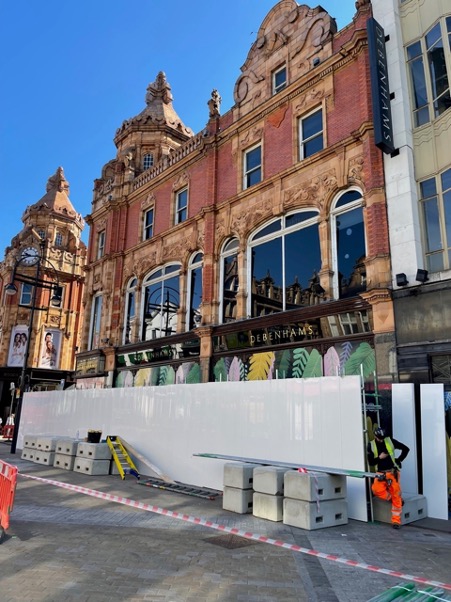 Debenhams hoardings going up 19th April 2023, with plans for a Flannels store.
Debenhams hoardings going up 19th April 2023, with plans for a Flannels store.
Time is running out for those High Streets that just mask the problem with window vinyls and coverings. You can’t hide what is happening. In Leeds we are seeing the truly positive impact of dealing with the issues and waking up to what is required. It needs a vision, belief, and a truly collaborative spirit. This can be applied to any place. But the rhetoric needs be matched by the reality of spades in the ground and action. It also requires bold decisions on changes in use or bringing new tenants into the city centre as we have seen with the Trinity University and Mathematical School. In addition to this Leeds has a long-term plan doubling the size of the city centre which includes the Aire Park development by Vastint. Already as you will see from the aerial shot, infrastructure is already taking shape with buildings which will include residential, office and retail.
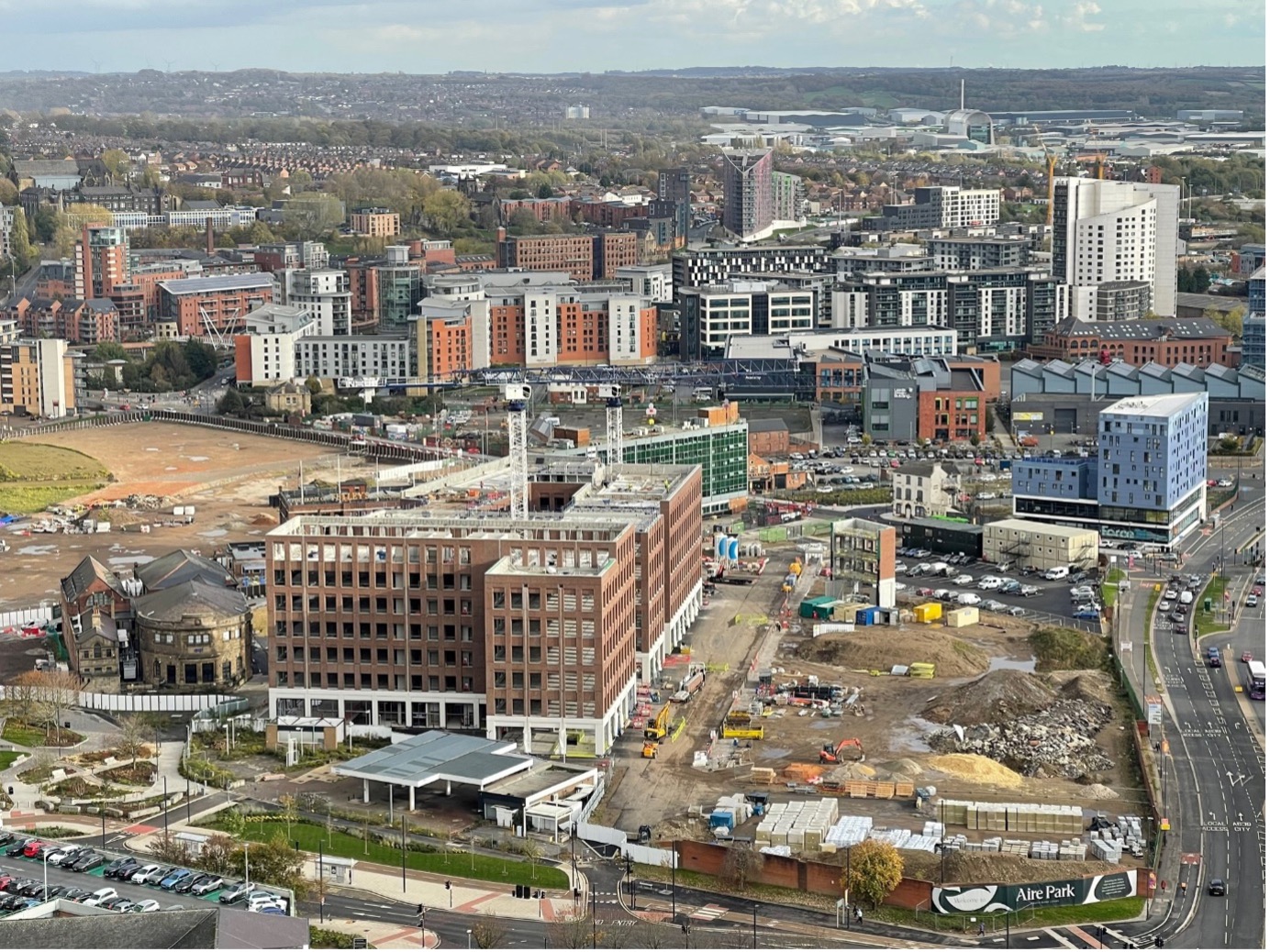 Aire Park -picture taken from the roof of Bridgewater Place and the historic Tetley Building will be in the heart of the development. (Photograph © A Cooper – November 2022)
Aire Park -picture taken from the roof of Bridgewater Place and the historic Tetley Building will be in the heart of the development. (Photograph © A Cooper – November 2022)
Leeds does indeed have a bright future. Those who come to visit Leeds, including the 6,000 delegates to UKREiiF in May 2023 at the Royal Armouries will see for themselves the transformation of the city. As the Business Improvement District in Leeds, we continue to champion the ‘Improvement’ of Leeds, and a key part of that is telling the story.
Andrew Cooper
Chief Executive, LeedsBID






